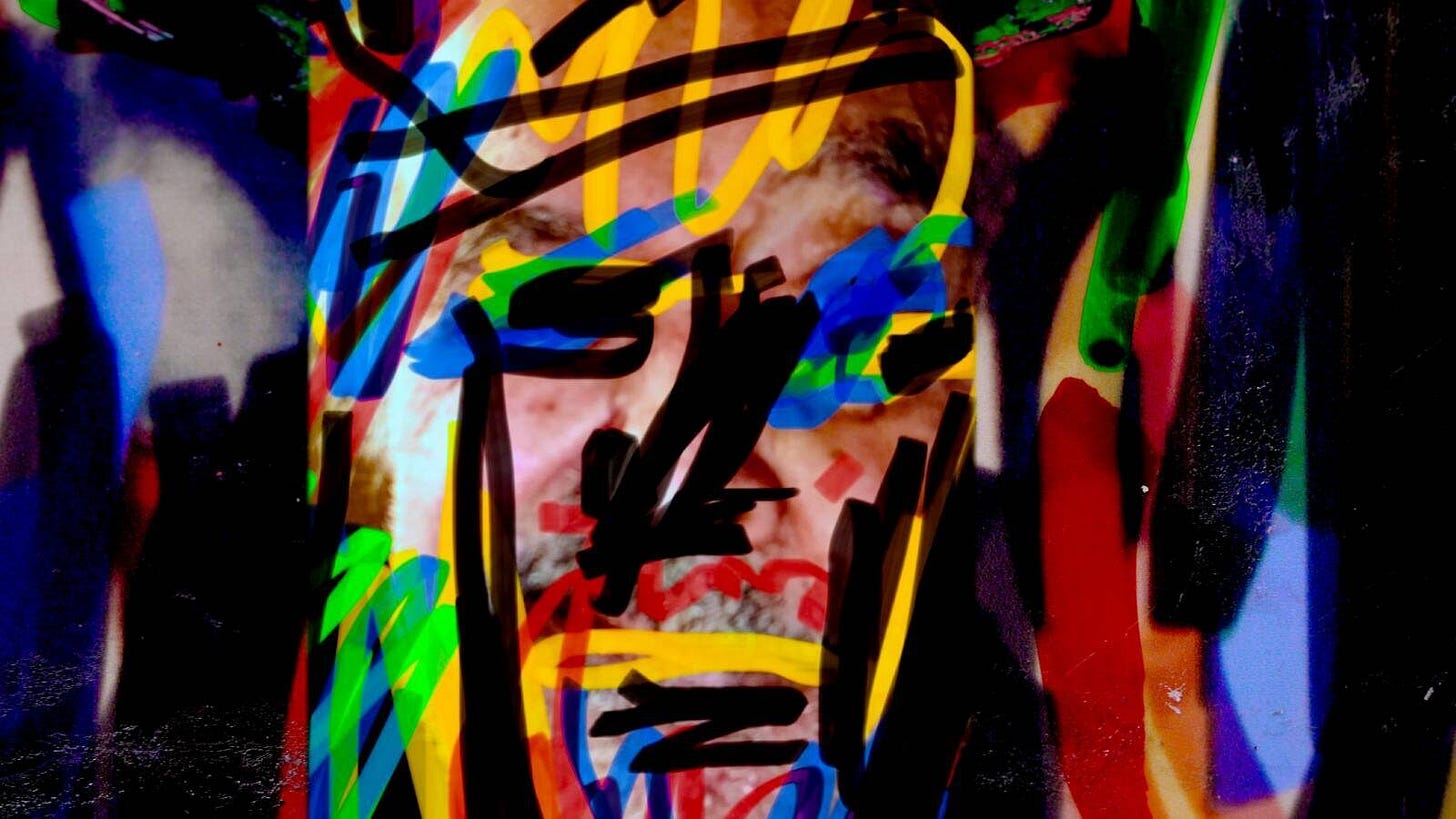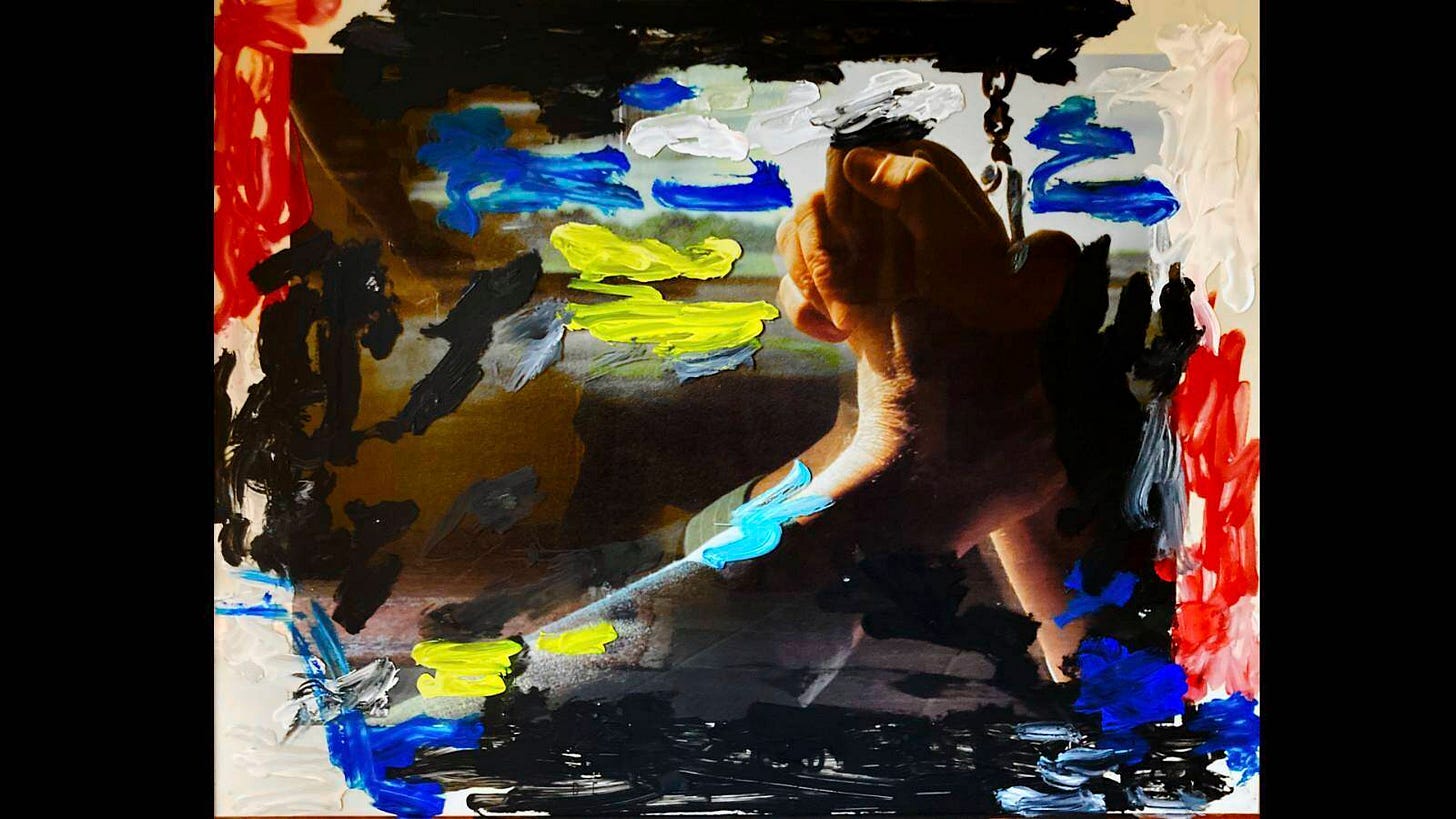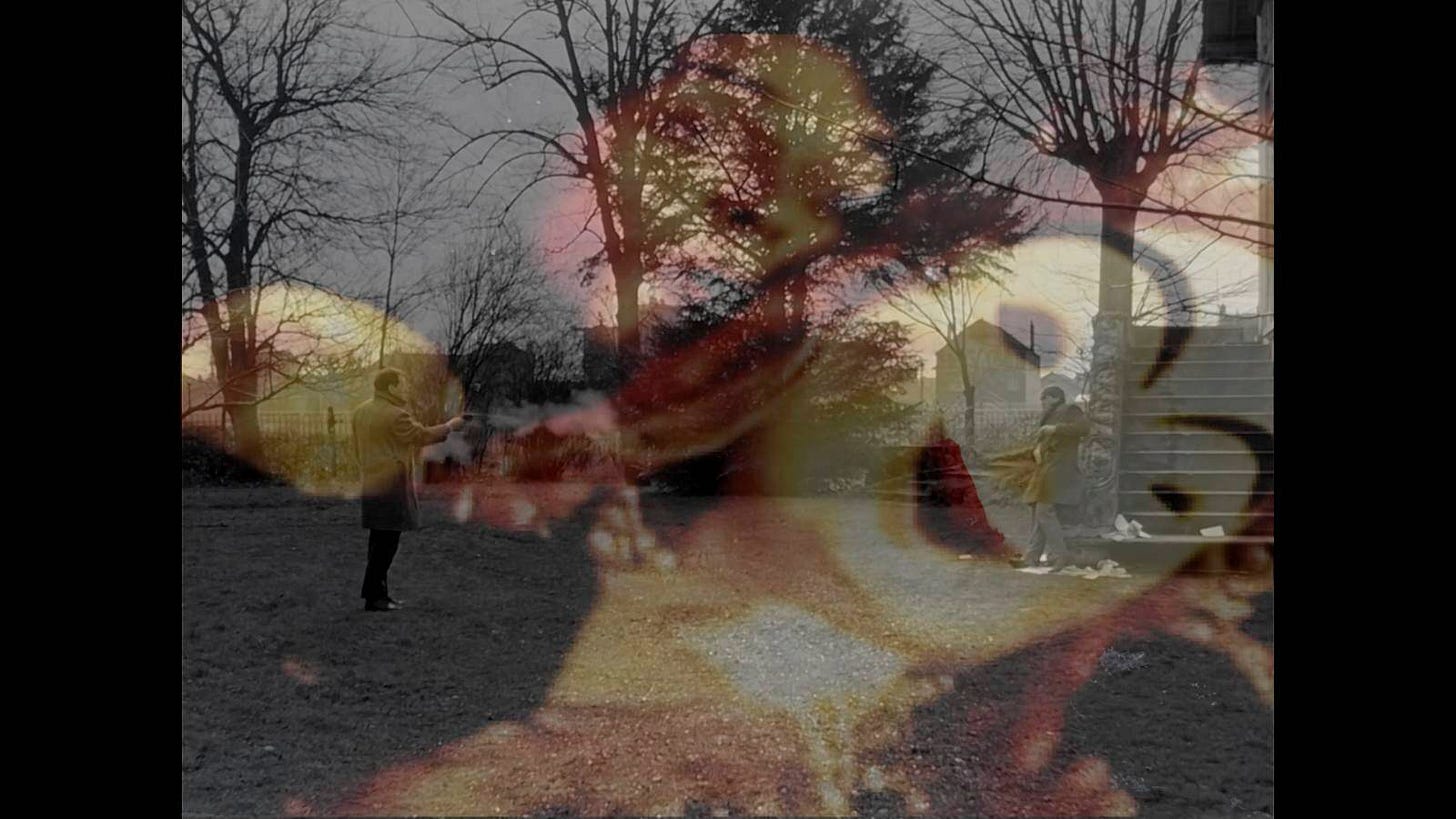Exposé du film annonce du film “Scenario”, Scénarios (Jean-Luc Godard, 2024)
On Godard's two posthumous shorts.
Exposé du film annonce du film “Scenario” (Jean-Luc Godard, 2024)
Exposé du film annonce du film “Scenario”, which chronicles the making of the last film Godard made before his assisted suicide on September 13th, 2022, largely consists of a single handheld shot as Godard flips through the notebooks he has been sending the production company, Arte, as a prototype of Scénario. Taking place between 2018 and 2021, the 40 minute featurette was completed with the assistance of Jonathan Bataggia, Fabrice Aragnio, and Nicole Brenez, who guide Godard’s discussion of his artistic process and contextualize the documentary in the aftermath of Godard’s death. The film opens with a series of news clips announcing the director’s passing, and precedes the body of the film with a suggestion for how to watch late-Godard, with French writer Laure Adler stating that she loves Godard because she never tried to understand him.
I’m unsure if the effect of Exposé would be diminished if I were familiar with Godard’s previous behind-the-scenes films (Scénario du film “Passion” comes to mind), but what struck me most about watching Godard flip through his notebook describing the epic 6-part conceptualization of Scénarios was the meticulous design of his dense works. While Godard’s intentionality has never been in question, it’s another thing entirely to see him, a year before his passing, painstakingly describe every quotation and layering. One of the primary tensions of Exposé that runs through many of Godard’s films is the relationship between images, words, sounds and the expansive ideas they might represent. The notebook onscreen and Godard’s narration are a signifier of his signifier-heavy cinema. His narration of the book’s juxtaposition of ideas and audiovisual experiences becomes an example in itself of his films’ intellectual and sensual vitality.
What must be new for Exposé is the way it subtly focuses on Godard’s failing health. Godard’s comparison of his films to the tactile experience of turning pages directs attention to his weakening hands, which briefly become the film’s focus when he requires the crew’s help to “re-shoot” two pages of the mockup. They offer to take pictures to help him see and make sure he doesn’t slice up the wrong image while editing. Exposé's comparison between Godard’s body and mind, and its juxtaposition with his cinema, acts as a premature memorial. Even when he’s gone, Godard’s mind lives on, imprinted in the endlessly generative worlds of his films.
Scénarios (Jean-Luc Godard, 2024)
Made over a year after the events of Exposé, Scénarios’ is a striking final film because it’s made with the knowledge of its creator’s impending death. While Godard’s notebook described a 6-part film, Scénarios consists of just two parts, titled DNA and MRI. What feels especially generous about Scénarios is that through the plural titling, Godard treats this restructuring as an additive process. His final film is yet another work in progress, a final offering, expanded by the death of its creator, that gestures towards an even greater infinity of films, images, and ideas to come.
Using similar imagery to pointedly divergent ends, the biologically-named segments of DNA and MRI, notable for their acronymic suggestion, form a loose theme-and-variation diptych. DNA, which opens with a voice-over narration describing the stirring of tired machinery coming alive, establishes Scénario’s interest in the relation between cinema and life. An entire life cycle seems to pass in DNA, which makes striking use of sound and silence, contrasting voice-over layered with orchestral music and ambient noise with an auditory vacuum. While a number of images pass in this silence, Godard eventually includes a clip, suffused with death, of a musician surreptitiously performing the final movement of Shostakovich’s final opus, his viola sonata, sans piano accompaniment after her rehearsal is interrupted by a menacing army officer. Shostakovich’s sonata, completed just days before his death, is in natural dialogue with Scénarios. Godard manipulates the music, introducing the melodious, dirge-like opening before superimposing it with the midsection, which feature the composer’s angular rhythms and semi-tonal double stops. In the process, Godard collages Shostakovich’s death with images of war and personal aphorisms. DNA is the more despairing half of Scénarios, and ends with images of political foreboding (an officer telling a train to set for the Occident, a masked man in the desert staring into the distance), in no doubt influenced by Shostakovich’s strained relationship with the Soviet government (which I’m admittedly not too knowledgeable about). As Godard considers his own passing, he uses Shostakovich to ponder the world that he’s leaving behind.
The more introspective of the two halves, MRI functions as a found-footage montage of death sequences set to the harsh noises of its titular machine. Both DNA and MRI open with the same prelude of stills, marking the inextricable link between Godard’s personal life and political activism. The clips Godard chooses, which include documentary war footage, canonical classics (e.g. Rome, Open City, Only Angels Have Wings, The Lady from Shanghai) and his own films (Band of Outsiders, Contempt, Weekend), speak to how his conception of of death, both in its ambiguity and its political resonance, is informed by the moving image. The disjunctive counterpoint formed between the beeping MRI and the seductive images reflects the looming immediacy of Godard’s passing, as well as the impregnable distance between cinema and physical experience (a dynamic also reflected in the usage of documentary footage). There’s an obvious personal element to this montage that makes it especially moving, as if Godard were trying to encapsulate his life while simultaneously finding comfort in the cinema to guide him into the afterlife. Godard even grants rare moments of nostalgia, such as when he plays snippets of Georges Delerue’s beautiful score from Contempt, but the general sense of MRI is that Godard is trying to approximate, or at least contour, something unfathomable.
In one of MRI’s most striking moments, a scene from Rome, Open City cuts to an illustration, that of a young boy lamenting the death of his mother. The hand-drawn image points to Scénarios’ status as a work-in-progress, but also suggests that the transition from moving to still image is a death that generates intellectual intrigue. This idea haunts the Scénarios’ humble final shot, taken the day before Godard’s passing, which captures him sitting at his bedside, philosophizing about signification. Despite its morbid solemnity, by placing this prospective image within Scénarios’ montage, Godard immortalizes himself as a living element in the cinema.








Absolutely loved the way that you illustrated the vignettes of these films as a kind of personal reckoning on death/ artistic longevity. Beautifully written.